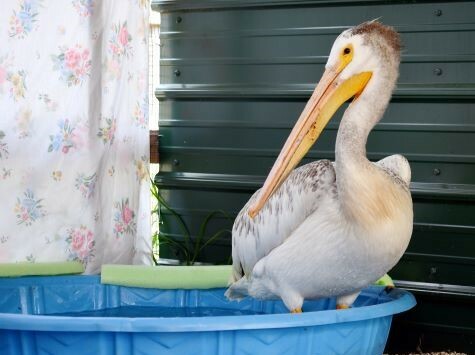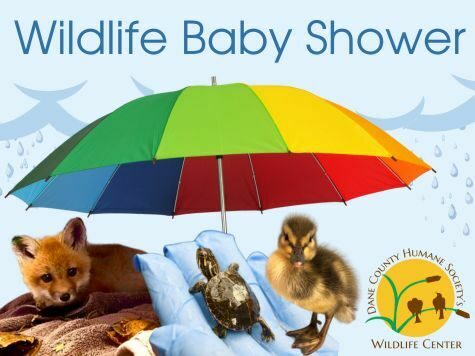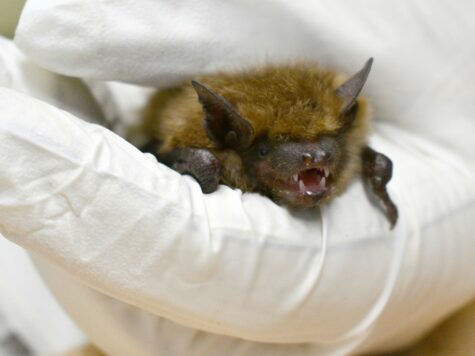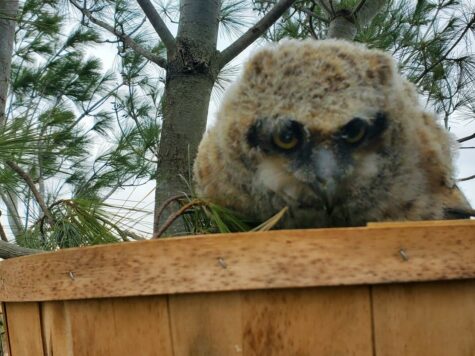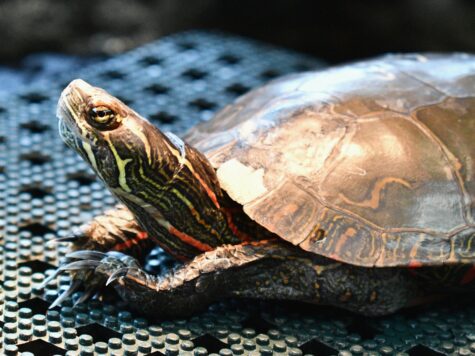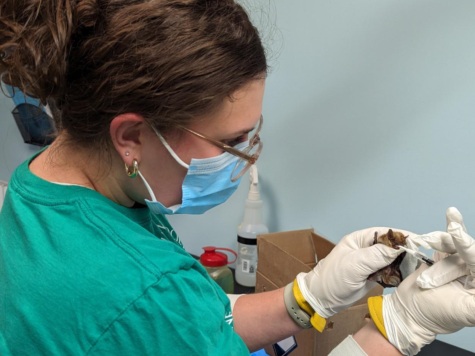Although his recovery at our facility was quick, this American White Pelican left quite the impression on those at Dane County Humane Society’s (DCHS’s) Wildlife Center.
He was found with his beak and pouch trapped under his wing, an unnatural position for pelicans. It is unknown how long the pelican was stuck, but it was more than a day between when he was first spotted and when he was admitted to our Wildlife Center’s care. His mottled, gray feathers indicate he was young, probably hatched earlier this year. DCHS’s Wildlife Center is so grateful to the finders who took the time to rescue this very young Pelican because they helped give him another chance at life.
Ultimately, it would appear this young, inexperienced Pelican saw this fishing lure as his next meal rather than a dangerous object. He became tangled in the fishing tackle, resulting in his awkward, contorted position.
Pelican deaths are frequently a result of human activity, which can include being shot, flying into power lines, or becoming entangled in fishing gear. This patient was unfortunately one of many that we see injured as a result of interactions between wildlife and people.
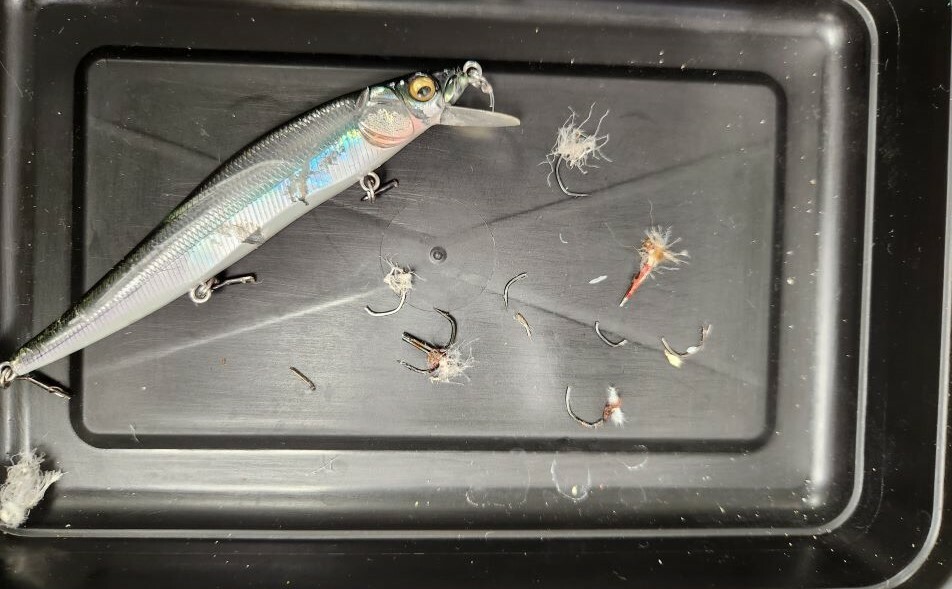
When he arrived at DCHS’s Wildlife Center, licensed wildlife rehabilitators removed the fishing hook and tended to his wounds: holes in his pouch, a handful of lacerations, and deep punctures affecting his wings, right leg, neck, and hips. His muscles were tense and strained because of the position he was stuck in until our staff removed the embedded hook. It took him a few days to be able to stand in place and, with limited range, begin moving his head.
Despite his wounds, Wildlife Center staff and volunteers affectionately called this pelican’s temperament “spicy,” since he expressed his boundaries very clearly. He wanted them to know he was large and in charge, but also that he had a healthy fear around humans, which is an important part of the wildlife rehabilitation process. Habituation or tameness of wildlife can put their lives at risk. Staff used a pool noodle to direct the focus of his snapping beak, which worked wonderfully to keep them safe, but he always preferred it when they came with fish to toss to him. He ate well and healed spectacularly in our Wildlife Center’s care! In just 20 days, his wounds were in the last stages of healing. This pelican was cleared with a final pre-release exam to make sure he was in great shape to survive on his own.
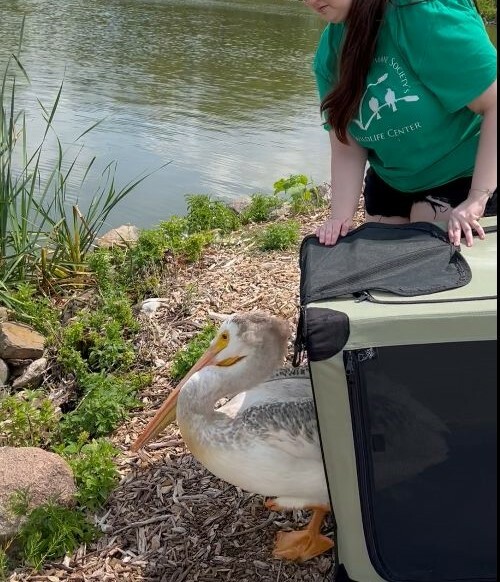
When he was ready for release, he was taken back to his home territory at Sinissippi Lake in Dodge County. He immediately exited the carrier, stretching as he approached the rocky shore to the lake. Once he extended his wings into the wind, he knew he was home.
Ashton Whitaker is a 2024 Werndli Apprentice
Thanks to our generous supporters, DCHS’s Wildlife Center has been able to care for over 2,000 sick, injured, or orphaned wildlife so far this year, including this spicy pelican. Thank you for donating and helping us save Wisconsin wildlife!
